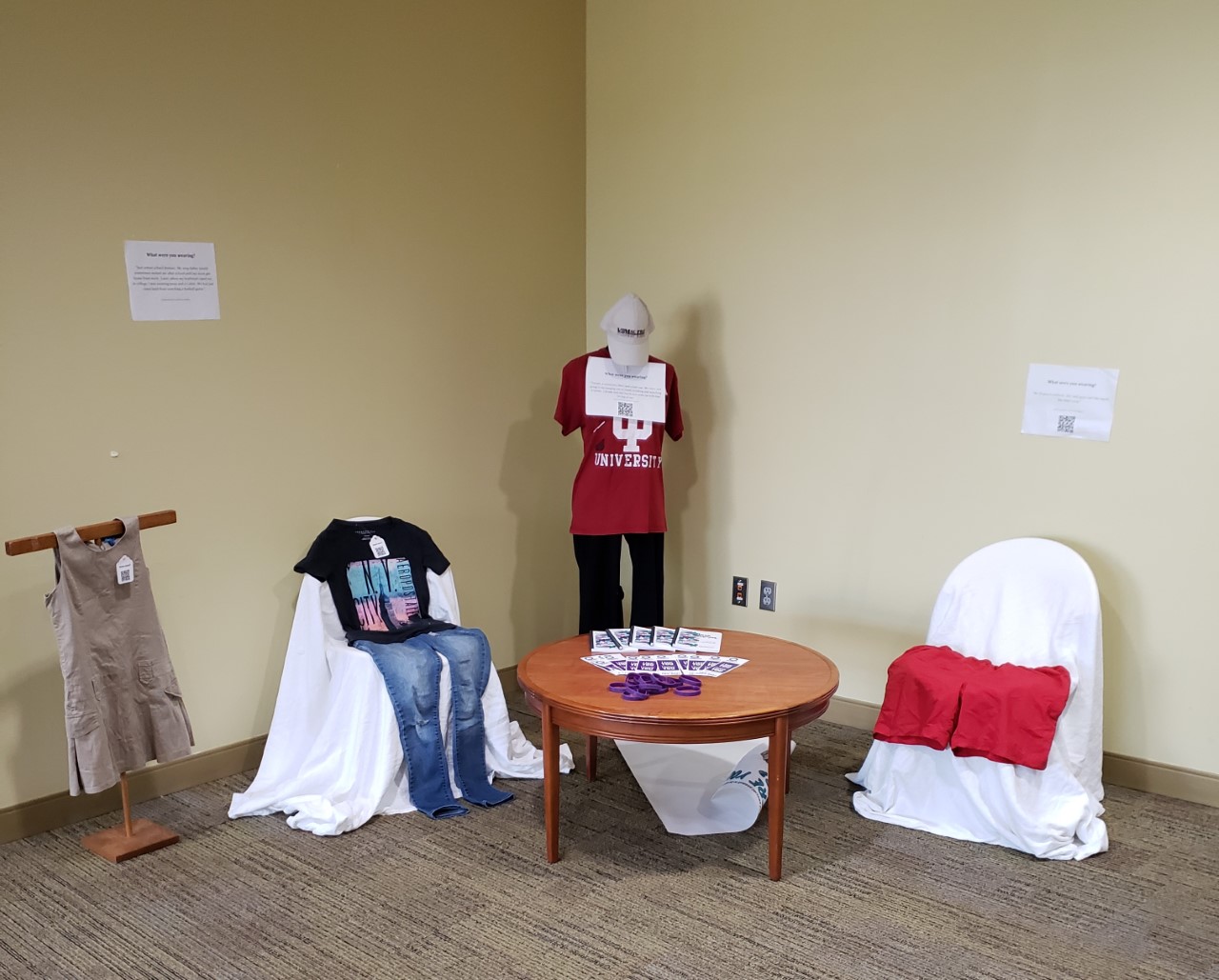 As a part of Sexual Assault Awareness Month, the Center for Advocacy, Response, and Education (CARE) displayed the “What Were You Wearing?” exhibit in the upper JYSC.
As a part of Sexual Assault Awareness Month, the Center for Advocacy, Response, and Education (CARE) displayed the “What Were You Wearing?” exhibit in the upper JYSC.
Photo by TJ Whitmer
CARE Displays 'What Were You Wearing?' Exhibit
Claire Butler
April is sexual assault awareness month and the Center for Advocacy, Response and Education (CARE) displayed a “What Were You Wearing?” exhibit in the JYSC in the hopes of raising awareness. “Ending sexual assault is not as simple as changing our clothes, but until that is understood, we will continue to ask, ‘What were you wearing?’” said SJ Henderson, director of CARE.
The exhibit originated at the University of Arkansas in 2013. It was created by Jen Brockman and Dr. Mary Wyandt-Hiebert, inspired by Dr. Mary Simmerling’s poem, “What I Was Wearing.”
CARE is a support resource at Manchester funded by the Office of Violence Against Women (OVW). It is a confidential resource not affiliated with Title IX. The hope is that through education, trainings and a coordinated community response, CARE will be able to prevent incidences of sexual assault, dating violence and stalking on all campuses. In addition, Henderson said: “I would like to expand our focus areas to exploring self-care.”
“What were you wearing?” is a question many survivors have been asked, which often suggests a response of self-blame. “The installation asks observers to understand that it was never about the clothing but always about the violation of one’s autonomy.” Henderson said. “The violation is not simply woven into the fabric of the material; it is part of the survivor’s new narrative.”
Sexual assault is underreported especially on college campuses, which is why it is so important to talk about and take seriously. The exhibit helps make the statement that the clothing a survivor wears is irrelevant when discussing sexual assault. “Furthermore, [rape/sexual assault] is a crime where victims often are not taken seriously, and they are often denied justice,” Henderson said.
With April being Sexual Assault Awareness Month (SAAM), it is important not only to tell survivors stories but also to talk about bystander intervention, cultural humility and rape culture.
Bystander intervention helps train people on how to help a potential victim as a proactive approach rather than a reactive approach.
Cultural humility is about acknowledging how different people have different barriers when it comes to accessing support resources or feeling comfortable disclosing the assault. “For example, there is an intersection of sexual violence and racism that presents additional barriers for black and brown survivors,” Henderson said. “By identifying what rape culture is and how it is empowered, we can actively participate in dismantling it.”
While April is dedicated to speaking up about sexual assault and rape culture, it is important to continue the conversations and education past the end of the month. Hendersonopes that raised awareness and education––not only about the assault after it has taken place, but also how to prevent it and step in as a bystander before it has occurred-–will decrease the popularity of rape culture on and off college campuses. “The exhibit can be helpful as far as awareness, she said, “but it will take so much more than that to actually dismantle rape culture.”
It is important to create a safe place for survivors to come forward in a way where they will not feel blamed for what they were wearing but taken seriously so that they can receive the help they need. So that rape culture can be faced head on, it is equally important to understand that sexual assault and rape culture is not about the clothes a survivor is wearing, but about the violation survived. The CARE exhibit attempted to show exactly that.